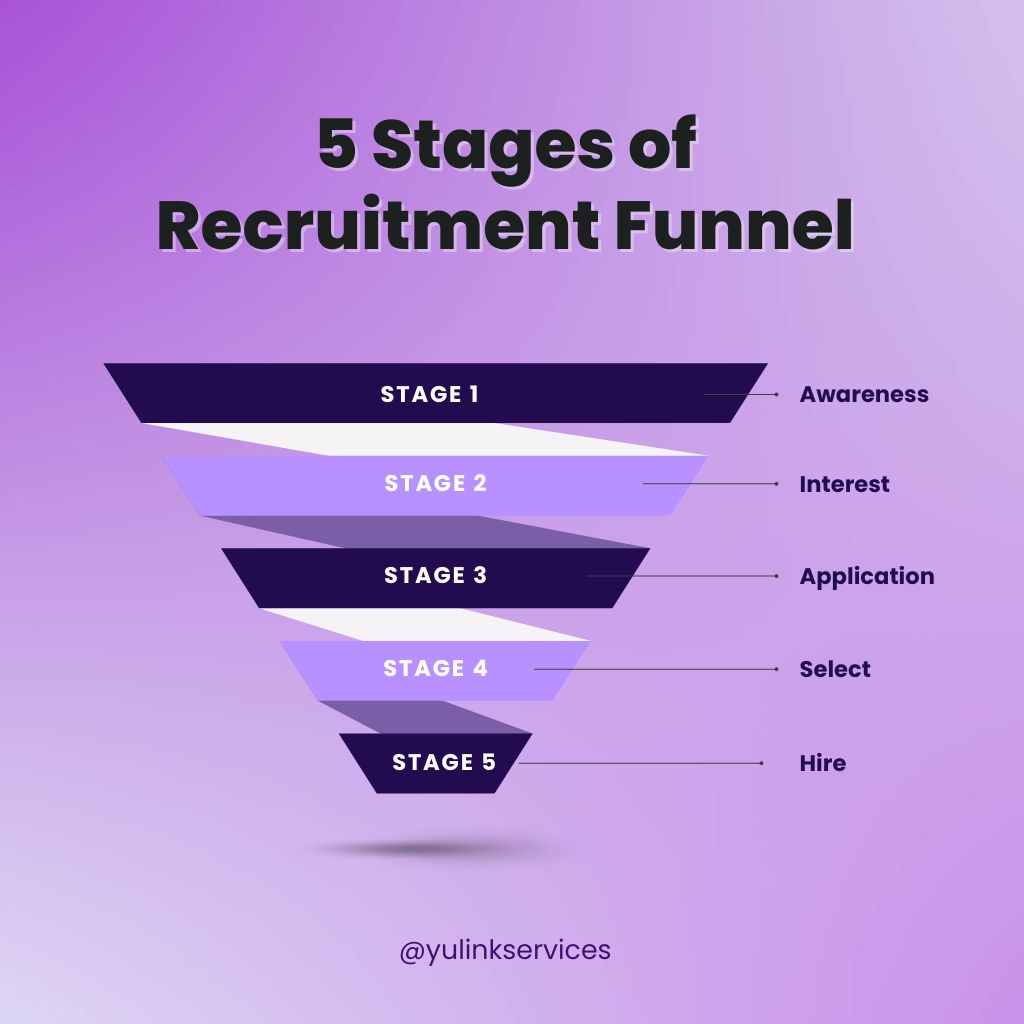Recruitment is a critical function within any organization. It’s the process of identifying, attracting, and hiring the most qualified candidates for a job opening. However, the task doesn’t end once a candidate is hired. It’s equally important to ensure that the new hire is the perfect fit for both the company and the role they are filling.
Understanding Your Ideal Candidate
To build a successful recruitment funnel, start by defining your ideal candidate. Consider the qualities, skills, and experience needed for the role and evaluate the company culture. This will help you attract candidates who are the best fit for the position and the organization. When outlining the desired skills, remember to include both technical and soft skills. Additionally, assess the candidate’s potential for growth within the organization.
Creating a Recruitment Funnel
Once you understand your ideal candidate, create a structured recruitment funnel. This will guide you through each stage of the hiring process, from sourcing candidates to extending job offers. A well-designed recruitment funnel typically includes the following stages:
– Sourcing candidates
– Initial screening process
– Assessing fit and skills
– Keeping track of candidates
– Making the offer
By implementing a structured recruitment funnel, you can establish a clear path for candidates as they progress through the hiring process. This not only streamlines the recruitment process but also provides a better candidate experience, showcasing your organization as professional and organized.
Sourcing Candidates: – Use job boards like LinkedIn, Indeed, and Glassdoor to reach a wide candidate pool.
– Leverage social media platforms (LinkedIn, Twitter, Facebook) for candidate sourcing.
– Attend professional networks, industry events, and conferences to connect with passive candidates.
– Implement an employee referral program to tap into existing employees’ networks.
Initial Screening Process:
– Conduct resume reviews to assess relevant experience, skills, and qualifications.
– Utilize technology or phone screening to further evaluate candidates’ qualifications and communication skills.
– Consider initial interviews to gauge candidates’ suitability for the position.
Assessing Fit and Skills:
– Assess cultural fit by evaluating alignment with company values and work environment.
– Evaluate job-related skills through technical assessments, case studies, and behavioral interviews.
– Provide opportunities for candidates to meet potential team members and experience the company culture.
Keeping Track of Candidates:
– Implement an applicant tracking system (ATS) to manage and organize candidate data.
– Categorize candidates based on their stage in the recruitment process.
– Maintain transparency and accountability throughout the hiring process.
Making the Offer:
– Ensure the offer aligns with the candidate’s compensation expectations and market value.
– Highlight benefits, perks, and career growth opportunities.
– Communicate the onboarding process clearly to the candidate.
Conclusion:
Building a winning recruitment funnel is essential for attracting and retaining top talent. By understanding your ideal candidate, creating an efficient hiring process, sourcing candidates effectively, assessing fit and skills meticulously, keeping track of applicants, and making compelling offers, you can build a recruitment funnel that helps you find the right people who will contribute significantly to your company’s success.


